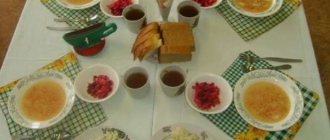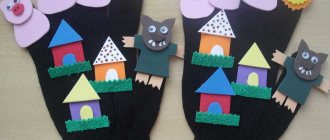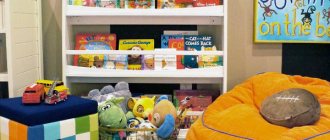Catering for preschool children
Olga Opemskaya
Catering for preschool children
One of the main tasks solved in preschool educational institutions is to ensure the constitutional right of every child to the protection of his life and health.
Among the activities aimed at improving the health of children attending preschool institutions , one of the first places is occupied by rational nutrition . of children largely depend on how clearly and correctly the nutrition is structured in a preschool institution . Proper nutrition is the basis of a long and fruitful life, the key to health and vigor. Therefore, in terms of kindergarten work, the issue of proper nutrition occupies one of the most important places.
The basic principles of catering in a preschool educational institution are as follows :
— Compliance with the energy value of the diet.
— Balance in the diet of all replaceable and essential nutrients.
— Maximum variety of products and dishes to ensure a balanced diet.
— Correct technological and culinary processing of products aimed at preserving their original nutritional value, as well as the high taste of dishes.
— Optimal diet , an environment that develops food culture skills children
Children who are in preschool for 12 hours should receive four meals , providing 75-80% of the daily ration. In this case, breakfast should be 25% of the daily calorie content, lunch - 35-40%, afternoon snack - 10-12%, and dinner calorie content is 20-25%.
In kindergarten, meals are organized in group rooms, but the entire food preparation cycle takes place in the catering unit. The catering unit is located on the ground floor and has a separate exit. In a preschool institution, it is necessary to strictly adhere to the diet , not to allow deviations from the established meal times by more than 10 - 15 minutes, which largely depends on the smooth functioning of the catering department. Control over the sanitary and hygienic condition of the catering unit is carried out by medical workers of the preschool educational institution. The kindergarten's catering unit is equipped with all necessary technical equipment. Food service workers are certified and undergo sanitary and hygienic training in a timely manner.
Transportation of food products is carried out by special vehicles of suppliers.
When compiling the menu, a developed card file of dishes is used, which ensures a balanced diet in proteins , fats, and carbohydrates. children's menu every day includes the daily allowance of milk, butter and vegetable oil, sugar, bread, and meat. Protein-rich foods (fish, meat) are included in the menu in the first half of the day. In the afternoon, children are offered dairy and vegetable dishes. Every day the menu includes vegetables, both fresh and boiled and stewed. Children regularly receive fermented milk for an afternoon snack products It is advisable that children receive two vegetable dishes and only one cereal dish during the day.
Ready-made food is issued only after a sample has been taken by a health worker and a corresponding entry in the journal of the results of the assessment of ready-made meals. Catering is constantly under the control of the administration.
In the proper organization of children's nutrition , the environment in the group is of great importance. Children should be provided with appropriate utensils and sit comfortably at the table. Dishes should be served beautifully presented, not too hot, but not too cold. Children should be taught to be clean and tidy at the table. Teachers should be calm and not rush children . When feeding children, the sequence of processes should be followed. Children with poor appetite should not be force-fed. Under no circumstances should children while eating with toys, reading fairy tales, etc.
To properly organize the nutrition of children in a preschool institution, it is necessary to ensure continuity between food in the institution and at home , to ensure that the child’s home diet becomes a supplement to the nursery. For this purpose, children's groups should post recommendations for parents on feeding children in the evening , on weekends and holidays.
In the summer, children's are associated with increased energy expenditure due to increased physical activity and long walks. In this regard, caloric intake in the summer should be increased by approximately 10 - 15%. This is achieved by increasing the amount of milk and dairy products, mainly through fermented milk drinks, as well as vegetables and fruits. In the summer, children should widely include fresh herbs in their diet - dill, parsley, lettuce, green onions, garlic, sorrel. Fresh vegetables and herbs not only make dishes richer in vitamins, but also give them an attractive appearance and pleasant taste, which is especially important in hot weather, when children appetite may decrease.
In summer, children's need for fluid increases significantly. Therefore, the group should always have a supply of fresh boiled water. Drinks should be offered to children after returning from a walk, before water procedures; on especially hot days, you can give a drink before meals. During walks, children should also be provided with something to drink.
Organizing children's nutrition is a complex , but at the same time important moment in the development of a child. When organizing meals , you should take into account a complex of various factors, such as:
·Age
·Geographical position
·Individual tolerance
· The relationship between nutrition in preschool educational institutions and nutrition at home .
Proper nutrition must fully meet the individual requirements of the child's body .
Proper organization of meals in groups (methodological recommendations)
Natalia Drobinina
Proper organization of meals in groups (methodological recommendations)
Organizing proper nutrition is a huge socially significant task in a preschool educational institution. This process includes preschool educational institution employees: teachers, medical workers, assistant teachers , cooks, administration, as well as parents of students and the children themselves .
The goal of the entire team is to preserve and strengthen the health of children, their diversified development, as well as the creation of an educational environment that ensures the formation of a proper nutrition culture .
All the main routine issues related to children’s nutrition , as is known, are carried out in a group . Responsibility for organizing meals for children in each group lies with teachers and assistant teachers . Pedagogical and hygienic requirements for organizing meals in a group are to create safe conditions in preparation for meals and, directly, during meals, as well as to develop cultural and hygienic skills during the personal hygiene of children. Before eating, children put their clothes in order, wash their hands thoroughly, and the attendants take whatever part they can in setting the table. (memos)
When organizing meals in groups , we must be guided by the objectives formulated in the Educational Program of the Preschool Educational Institution, compiled on the basis of the program “From Birth to School”
, SanPiN 2.4.1.3049-13 and Federal State Educational Standard for Education, focusing on the age characteristics of preschool children.
(memos)
The teacher and assistant teacher must always work in harmony.
By organizing meals , the following tasks of hygiene and nutritional rules :
- compliance with the daily routine and all routine moments during the entire educational process;
— taking into account the physical, mental and emotional state of children;
— satisfying the organic needs of children and creating a positive attitude towards food;
— timely formation of cultural, hygienic and aesthetic nutrition , culture of behavior of children at the table, taking into account the age characteristics of children;
- formation of rules of behavior and relationships between children and adults.
forms of work on organizing meals for children. The psychological comfort of children in a preschool educational institution largely depends on how food is organized : the quality of the dishes offered to children, their compliance with the needs of a growing body , the variety of the menu and the meal procedure itself. Work with children can be carried out in a playful, accessible form using practical tasks on the topics of educating children about food culture , creating a positive attitude towards eating in children. The professional duty kindergarten teacher table manners , which occurs both in special organized classes and during meals. In organizational and educational activities , you must consolidate with children the knowledge, skills and abilities of organizing proper nutrition . To develop their knowledge about healthy eating , the benefits of vegetables and fruits, the rules of behavior at the table , basic knowledge about their body , and conduct practical classes with children on the topic of educating children about a nutritional culture and a positive attitude towards eating. In such classes, children learn the rules of etiquette at the table , children develop skills in the correct use of cutlery and utensils, and children can independently consolidate the knowledge acquired in OD and in practical classes in free activities.
For children’s independent activities, it is necessary to constantly replenish the developing PP environment with a variety of materials on this topic: new visual materials, games, attributes for role-playing games; cards of speech games on the topic “ Nutrition ”
, physical exercises, finger games.
You can create card files of proverbs and sayings, nursery rhymes “Oral folk art about
nutrition ” , riddles on the topic
“ Nutrition ” “Riddle Games”
, albums
“Conversations with children about
nutrition ” and “Mini-situations and problems related to
nutrition” , as well as their decisions." You can make such didactic games that will be aimed at developing proper nutrition , such as “Vegetables, Fruits, Berries”
,
“Bread is the head of everything”
, “Professions of the food industry (cook, culinary specialist, confectioner”,
“At the table”
,
“What is cooked from?” porridge and how to make it tasty?"
,
"Let's collect fruits in a basket"
and others. Also well-known games, such as
"What's extra?"
, "The fourth odd one
(fruits, vegetables, dishes, berries)
", "Dominoes
(Fruits) , vegetables, berries, mushrooms)
",
"Etiquette for children"
, "Classification
(Fruits and vegetables)
",
"What is missing"
, "Lay the table beautifully
(table setting)
" and others. During such games, children independently consolidate what they have learned knowledge on nutrition
... For
role-playing games in a group, you can organize such role-playing games as “Family”
,
“Cafe”
,
“Cooks”
, “Shop
(groceries, fruits and vegetables)
”,
“Birthday”
,
“Guests came to us”
and others.
For such games, you have collected dummies of fruits, vegetables, mushrooms, as well as food , there is a form for the seller in the “Store”
there are beautiful toy dishes and napkins.
“Fruits, vegetables, berries, mushrooms” if they wish.
,
"
Food " . And also diversify your creativity with templates for tracing.
Before the reception, while the assistant teacher and the attendants are setting the table, you can have conversations with the children on the topic “Hygiene”
,
“Healthy lifestyle”
,
“Cultural and hygienic
rules ” ,
“
Rules of behavior at the table ” .
Play sedentary games, finger games, read books about nutrition , use poems, nursery rhymes, and jokes that help create interest in the process of preparing for catering and eating food itself.
When organizing meals , develop cultural and hygienic skills in children (washing hands)
.
In the toilet room you have a washing algorithm, and you need to reinforce with children how to wash their hands correctly , also using poems, nursery rhymes, jokes (in accordance with age)
.
It is necessary to pay great attention to the ethics, aesthetics of nutrition and the culture of behavior of children at the table; the sooner the child develops correct nutrition skills , the more firmly they will become established, becoming a habit in childhood and a necessity in adulthood. The group should have diagrams of the table setting algorithm and duty algorithm.
Parents of our students are full participants in the educational process, and we have a common task - to teach a preschooler to behave correctly The effectiveness of catering largely depends on the situation in the group , on its RPPS, and parents can also help us in this. You can also ask parents to make didactic games, add attributes and products to the “Kitchen”
,
“Shop”
, making them from salt dough or knitting them.
You can organize exhibitions of creative works “We are for
proper nutrition !” ,
“Healthy foods and unhealthy foods”
,
“Do-it-yourself little books about food”
,
“Our family’s favorite dish”
.
exhibition of arts and crafts and photographs “Together in the Kitchen”
.
It is also necessary to educate parents on this topic, since many parents do not have sufficient knowledge of nutrition . Because another main problem for parents is being very busy at work, preparing food from semi-finished products and having a snack at a fast food . Therefore, it is possible to provide information in traditional ways, creating:
- information folders
— consultations ( “ Feeding a child in the family ”
,
“
Nutrition and Education ” ,
“Vegetable Kaleidoscope”
)
- parent meetings
Inform parents about the range of food for children (menu for today)
Provide individual counseling to parents of children with poor appetite. You can publish booklets “Let’s talk about proper nutrition ”
Hold a recipe competition “Our Family’s Favorite Dish”
.
In conclusion, I would like to say that only systematic work will produce results, children will have a better attitude towards the work of adults, children will develop CGN, they will learn to sit gracefully at the table and eat food correctly , they will know about healthy and harmful foods , the incidence of illness will decrease children. And most importantly, they will eat right .





